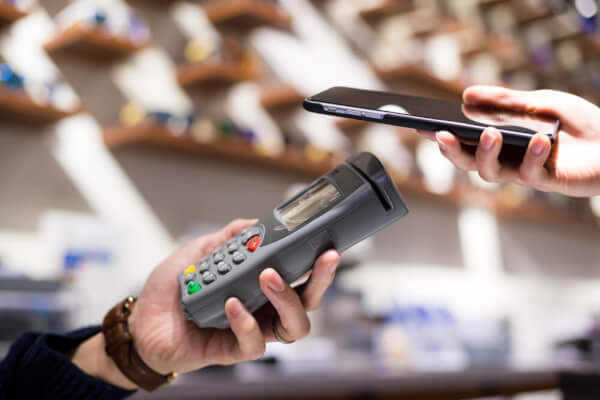If you live and work in Malaysia, you’ll probably be paying PCB, which is also known as your monthly tax deduction (MTD). This quick guide runs through all you need to know about PCB and how it’s calculated.
While you’re thinking about managing your money in Malaysia, we’ll also touch on Wise as a cheap and convenient option to send money internationally. Cross border payments with Wise are possibly cheaper than Malaysian banks, meaning you’re left with more money to spend on yourself.

What is PCB?
On with the most important question - what is PCB tax? PCB is the Malaysian monthly tax deduction - Potongan Cukai Bulanan in Malay. As we mentioned, it’s also sometimes simply called your monthly tax deduction in English, so if you’re looking for the MTD meaning, it’s the same as PCB.
As in many other countries, PCB is deducted at source. This means your employer will withhold the required amount of tax each month automatically and pass it over to the tax authorities¹. This is usually much more straightforward than filing annual taxes, and paying a big bill at the end of the tax year.
What is the minimum salary to pay PCB in Malaysia?
To calculate income tax, you’ll need to first work out your taxable income after any deductions or tax relief. The minimum salary to pay PCB then depends on your tax filing status - for example if you’re filing as an individual or couple, and whether or not you have any children under 18.
You can find the latest PCB rate on the Inland Revenue’s website, and there are handy details provided in the FAQ section² too. While the minimum income to start paying a monthly tax deduction in Malaysia does vary, in 2023 it’s usually in the region of 3,000 MYR to 4,000 MYR taxable income per month.
How to calculate PCB
Calculating PCB can be complex. The good news is that you’re unlikely to have to do the calculations yourself, because your employer will handle this for you.
That said, many people want to check the calculations being used are correct - and so there is a lot of information available online about how PCB payments are calculated.
The exact details of the calculation may change depending on the types and amounts of income, and any deductions or benefits you can claim against them. Because tax is a complex area, you may need professional advice about your tax obligations if your situation is unusual or if you’re unsure of how to pay the correct amount of tax in a given year.
In basic terms, your employer will calculate your annual chargeable income by taking your total annual income and offsetting any tax reliefs or deductions you’re eligible for. Your total annual tax will then be calculated according to the tax rates which are in operation for the current tax year. This sum will then be divided by 12, to get a monthly figure for the PCB deduction. Here’s how this looks:
- Calculate annual chargeable income: total annual income - eligible tax reliefs and deductions
- Calculate annual tax based on chargeable income and current tax rates
- Calculate monthly PCB by dividing annual tax by 12
Malaysia’s tax authorities provide an official PCB calculator, here.
Or you can try an alternative PCB Calculator like these - although it’s worth noting that these calculators are provided for guidance only:
As with any tax payment, PCB can be complex, so take professional advice if you’re unsure what you should be paying.
Sending money abroad? Watch out for exchange rates
Nobody wants to spend more than they have to, to manage their money. Bank fees and currency exchange can be a big cost of living as an expat - but you can cut the price of exchanging currencies, and sending or spending money overseas.
With Wise, you can send money to 160+ countries with low, transparent fees and the mid-market exchange rate. That means no hidden costs and no nasty surprises³.
Wise also offers easy ways to compare their fees and exchange rates, and how much your recipient could get in the end, against other popular options here in Malaysia. Check out the comparison tool below to generate an instant quote from Wise, and see how it compares against a few banks.
Wise can also help with managing your money day to day across currencies. With a Wise account you can use to hold 40+ currencies, and to get paid in MYR or from the UK, U.S., Australia, New Zealand and any Eurozone country, using local bank account details in those countries.
It's free to spend any currency you hold in your Wise account using your Wise international debit card, and you can switch currencies manually or automatically using the mid-market rate whenever you want to.
To send money with Wise:
- Create a free account
- Choose an amount to send
- Add recipient’s bank details
- Verify your identity
- Pay for your transfer by bank transfer or debit/credit card
And that is it! You can track your transfer in your account and your recipient will also be notified when a transfer reaches them.
Join 16 million customers and enjoy a cheaper, faster and transparent way to send money abroad with the mid-market exchange rate.
Try Wise today!
Sources:
- Inland Revenue Board of Malaysia
- Malaysian government - tax FAQ
- Pricing/fees: Please see Terms of Use for your region or visit Wise Fees & Pricing for the most up to date pricing and fee information
*Please see terms of use and product availability for your region or visit Wise fees and pricing for the most up to date pricing and fee information.
This publication is provided for general information purposes and does not constitute legal, tax or other professional advice from Wise Payments Limited or its subsidiaries and its affiliates, and it is not intended as a substitute for obtaining advice from a financial advisor or any other professional.
We make no representations, warranties or guarantees, whether expressed or implied, that the content in the publication is accurate, complete or up to date.









